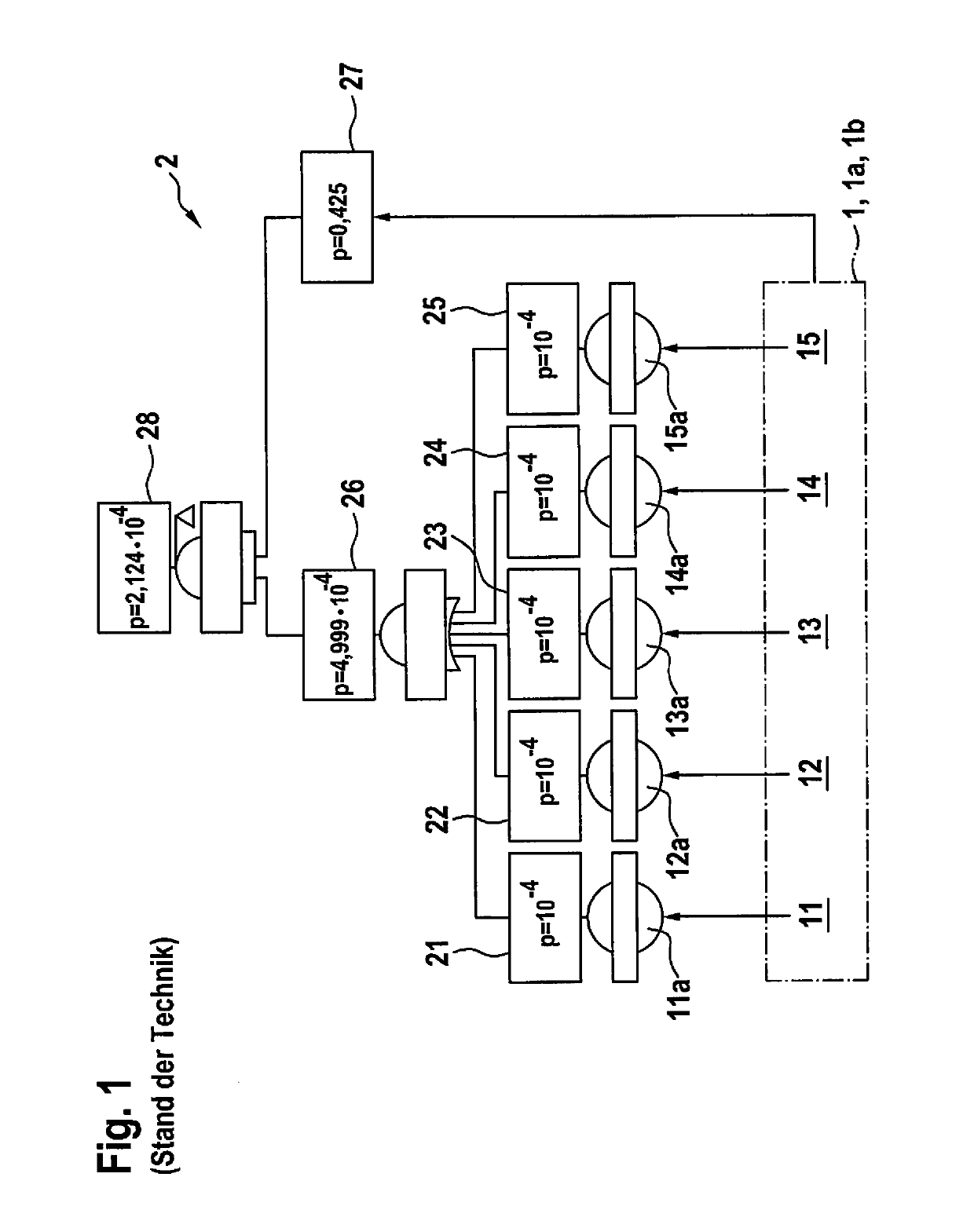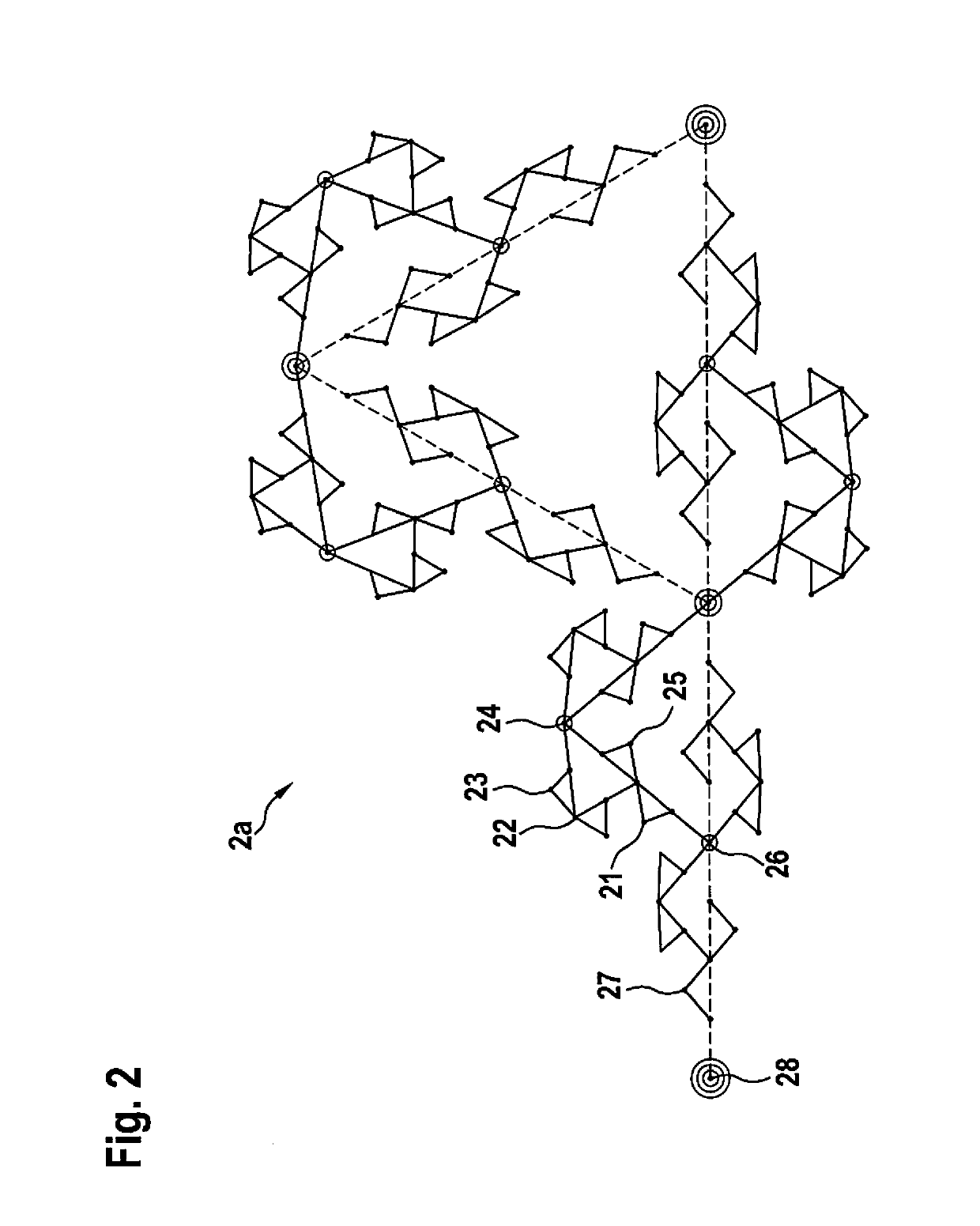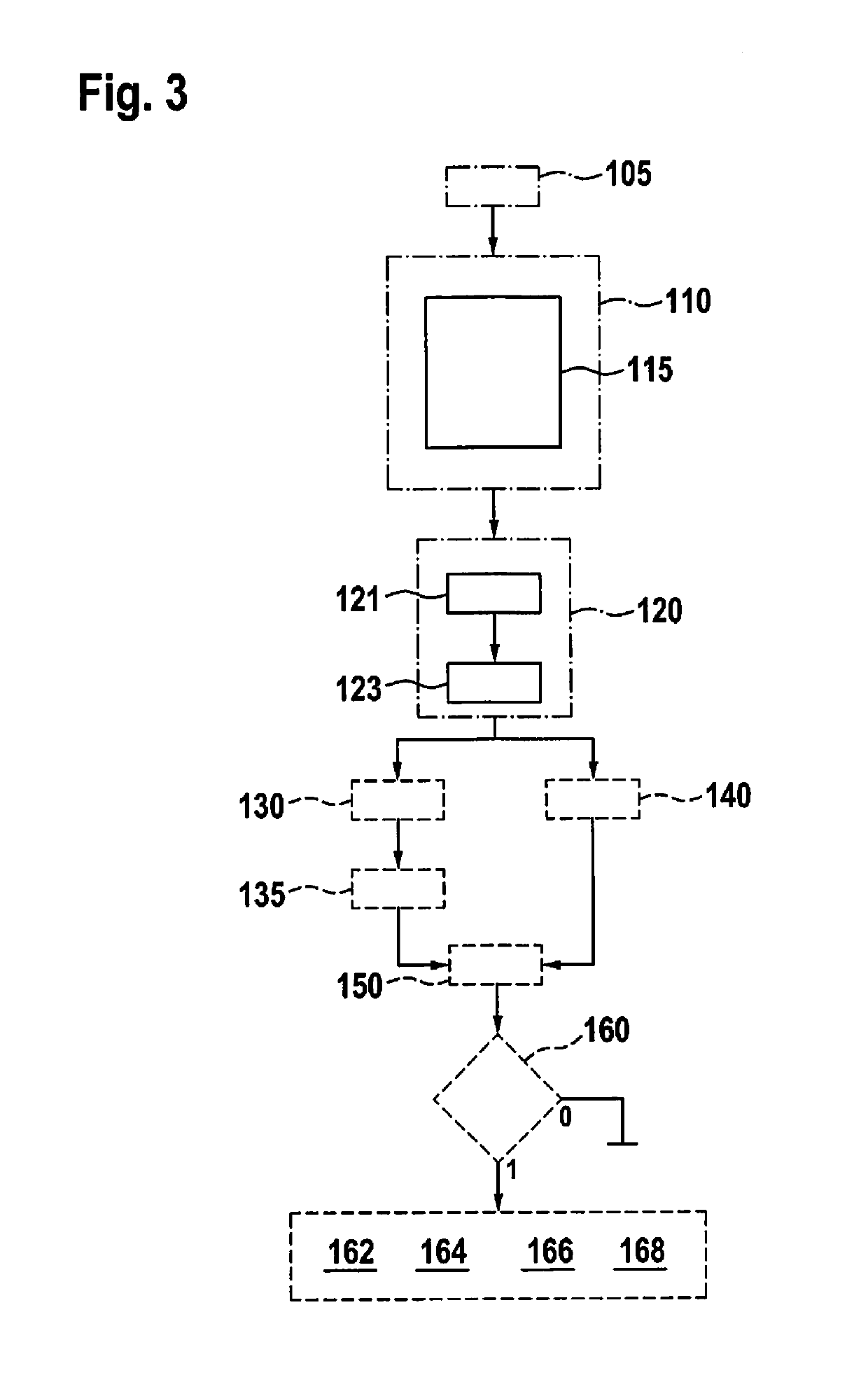Fault tree analysis for technical systems
a technology of fault tree and technical system, applied in the field of fault tree analysis, can solve the problems of vehicle tipping, event “out of service”, severe physical damage or personal harm, etc., and achieve the effect of low cost, less data, and high probability of a malfunction
- Summary
- Abstract
- Description
- Claims
- Application Information
AI Technical Summary
Benefits of technology
Problems solved by technology
Method used
Image
Examples
Embodiment Construction
[0043]According to FIG. 1, technical system 1 shown by way of example, which may be in particular a surroundings detection system 1a or a control system 1b of an at least partially automated driving vehicle, includes five functional units 11 through 15. The probability is sought that an undesirable event 28 will occur, and / or an effort is made to keep this probability below a predefined level. All probabilities are identified with letter p in FIG. 1.
[0044]As indicated by the symbol of the AND gate at undesirable event 28, the scenario assumed in FIG. 1 may only occur if two conditions are met simultaneously: on the one hand, a fault state 26 has to exist, and, on the other hand, the vehicle has to be in an operating state 27, in which fault state 26 also has an effect.
[0045]As indicated by the symbol of the OR gate at fault state 26, fault state 26 may go back through one or multiple of events 21 through 25, which are in turn triggered by malfunctions 11a through 15a of functional u...
PUM
 Login to View More
Login to View More Abstract
Description
Claims
Application Information
 Login to View More
Login to View More - R&D
- Intellectual Property
- Life Sciences
- Materials
- Tech Scout
- Unparalleled Data Quality
- Higher Quality Content
- 60% Fewer Hallucinations
Browse by: Latest US Patents, China's latest patents, Technical Efficacy Thesaurus, Application Domain, Technology Topic, Popular Technical Reports.
© 2025 PatSnap. All rights reserved.Legal|Privacy policy|Modern Slavery Act Transparency Statement|Sitemap|About US| Contact US: help@patsnap.com



